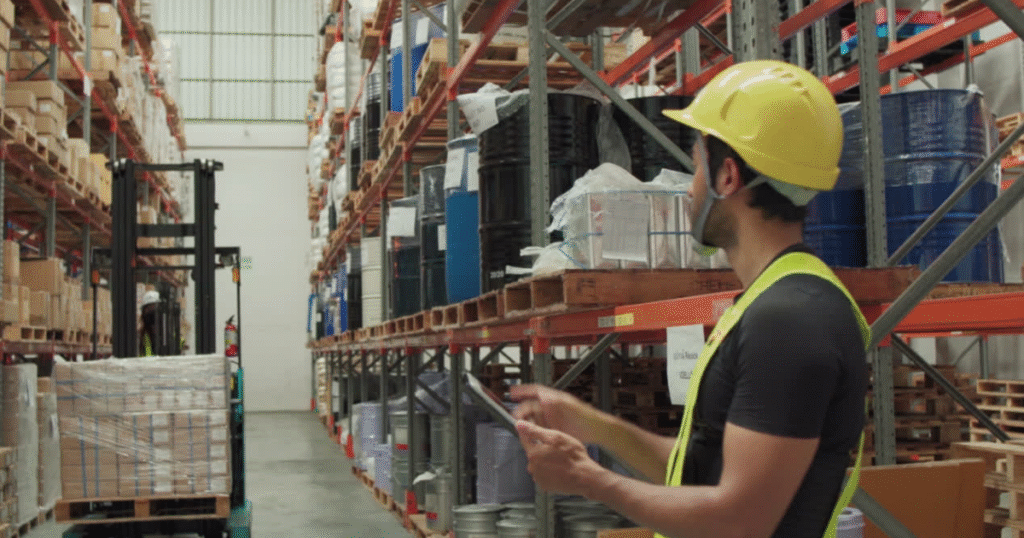Efficient warehouse operations are essential for any construction business that depends on inventory and parts and materials. A well-run warehouse reduces costs, speeds up order processing, and improves operational efficiency. On the other hand, disorganization can lead to misplaced items, longer pick times, and errors that disrupt the entire supply chain.
The good news is that you do not need a complete warehouse overhaul to see improvement. By focusing on a few key areas, you can streamline operations and make better use of your resources. Here are five practical tips you can use to help improve construction warehouse efficiency.
Streamline Your Layout
The layout of your warehouse has a direct impact on productivity. If employees spend too much time walking back and forth, searching for items, or navigating cluttered aisles, efficiency quickly drops. Organize your warehouse so that high-demand products are stored closest to packing and shipping stations. Place slow-moving stock further away, and ensure heavy items are positioned in a way that minimizes lifting risks.
Clear signage and logical categorization help workers find what they need quickly. Aisles should remain wide enough for safe equipment operation, and there should be designated zones for receiving, storage, packing, and shipping to keep workflows moving smoothly.
Strengthen Inventory Management
Inventory management is one of the most important elements of a successful construction warehouse. Without reliable systems in place, it becomes easy to overstock, understock, or misplace critical items. Implementing consistent tracking, whether through barcode scanning or software integrations, ensures your team knows exactly what is in stock and where it is located.
Regular cycle counts and audits can further support accuracy, reducing the need for disruptive full inventory counts. Strong inventory practices not only save time, but also improve customer satisfaction by ensuring orders are filled correctly and on time.
Standardize Processes and Provide Training
A warehouse functions best when everyone is on the same page. Standardizing processes for receiving, picking, packing, and shipping eliminates confusion and creates consistency across shifts. Document these processes so they can be followed and referenced by both new and experienced staff.
Training is equally important. When employees understand how to properly use equipment, follow safety procedures, and handle materials, the overall pace of work improves. Cross-training team members also ensures flexibility when demand fluctuates or when someone is out, preventing bottlenecks.
Introduce Technology Where It Adds Value
Technology can reduce manual errors and improve speed without requiring a complete transformation of your operations. Even small upgrades such as handheld scanners, mobile devices for real-time updates, or software that integrates with your ERP system can deliver measurable improvements.
Automation tools, when thoughtfully applied, allow employees to focus on higher-value tasks instead of repetitive manual entry. By reducing inefficiencies in tracking, picking, and reporting, technology helps your team complete tasks more quickly and with fewer errors.
Review and Improve on a Regular Basis
Warehousing in construction is not static. Job demands, order volumes, and materials change over time, and your processes need to keep pace. Regularly review your warehouse operations to identify bottlenecks or recurring problems. Look at metrics such as pick accuracy, order turnaround times, and inventory discrepancies to see where adjustments are needed.
Employee feedback is also valuable. The people working on the warehouse floor often spot issues that are not visible in reports. By making small, consistent improvements, your warehouse can continue to evolve and stay efficient as your business grows.
An efficient construction warehouse supports the entire business by reducing costs, improving accuracy, and ensuring customers receive their orders on time. With a thoughtful layout, strong inventory management, standardized training, smart technology, and ongoing improvement, you can build a system that adapts to today’s demands and prepares you for tomorrow’s growth.



